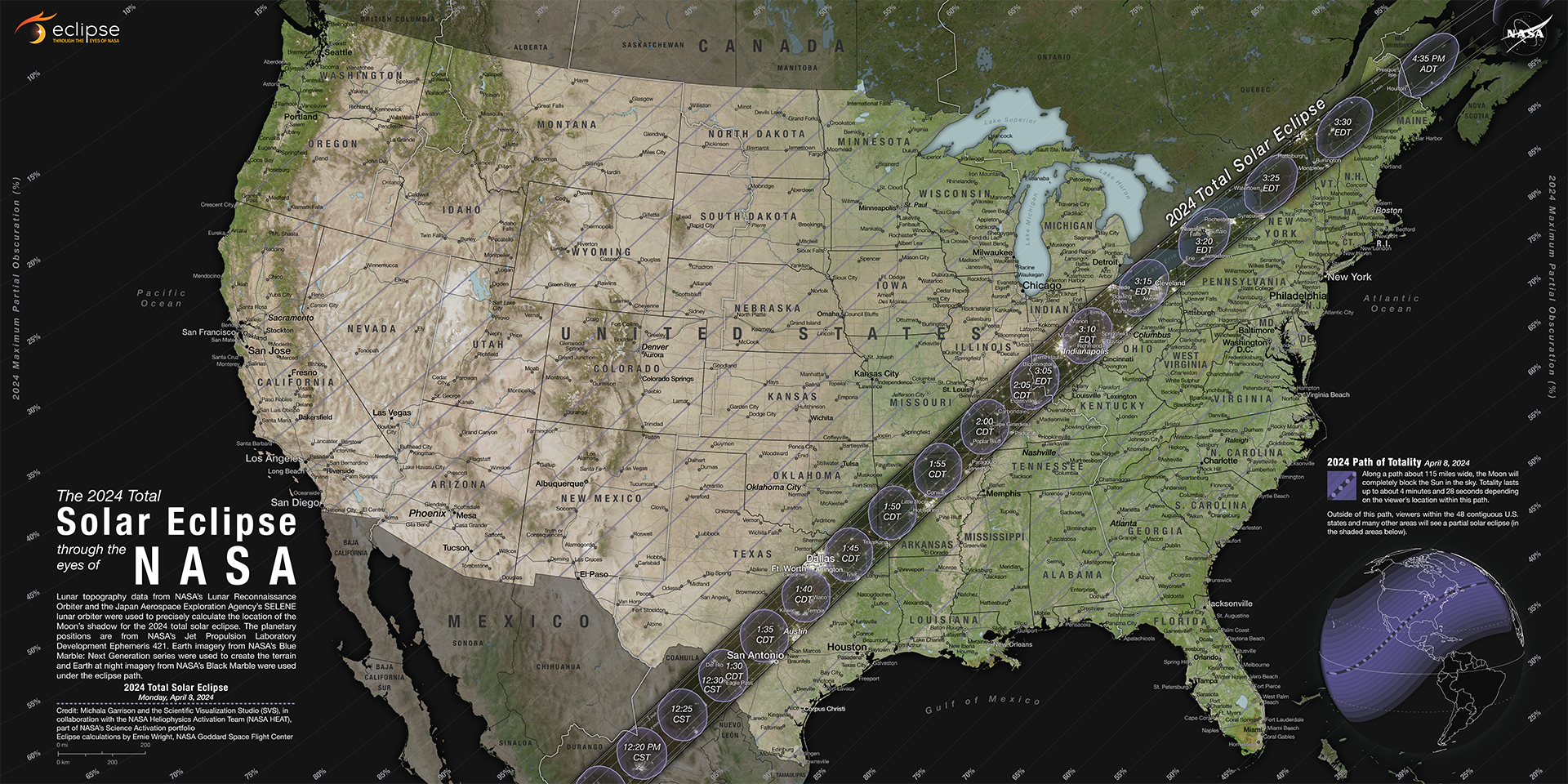5 min read

On April 8, 2024, much of North America will experience a solar eclipse: a cosmic alignment of Sun, Moon, and Earth, in that order. The Moon's shadow path will make landfall on Mexico's Pacific coast, cross the United States from Texas to Maine, and exit North America via Newfoundland, Canada, continuing into the Atlantic Ocean.
Learn how to safely observe the 2024 Solar Eclipse
It's All About Perspective
Solar eclipses on Earth are a convenient coincidence. The Sun's diameter is about 400 times larger than the Moon's, and the Sun is almost 400 times farther away from us than the Moon is. This combination makes the Sun and Moon appear nearly the same size in our sky, setting up a spectacular show when they align. Try experimenting with apparent size for yourself by holding up a small item, like your thumb, and moving it closer and farther away to block different-sized objects from your view.
The Moon's distance from Earth varies, though only slightly. The Moon's orbit is not a perfect circle, and it is not quite centered on our planet. At its closest, the Moon is about twenty-eight Earth diameters away; at its farthest, about thirty-two. As a result, the Moon's apparent size changes over time, and eclipses are not all alike.
A total solar eclipse is only possible when the Moon is closer to Earth than average. When the Moon is farther away, its apparent size is smaller than the Sun's, so it does not completely block the Sun's bright disk. In this configuration, when the Moon passes between Earth and the Sun, a "ring of fire" remains visible - that's an annular solar eclipse.
An Orbital Dance
Ever wonder why solar eclipses don't happen more often? Earth, Moon, and Sun don't line up perfectly every month because the Moon's orbit is tilted by about 5 degrees compared to Earth's orbit around the Sun. Most of the time, the Moon's shadow misses our planet.
When all three celestial bodies do align, views of the eclipse depend not just on our position in the solar system, but also on our location on Earth. The Moon's shadow has two parts, the umbra and the penumbra. Observers in the umbra (or "path of totality") will experience a total solar eclipse. For those in the penumbra, the eclipse will be partial.







